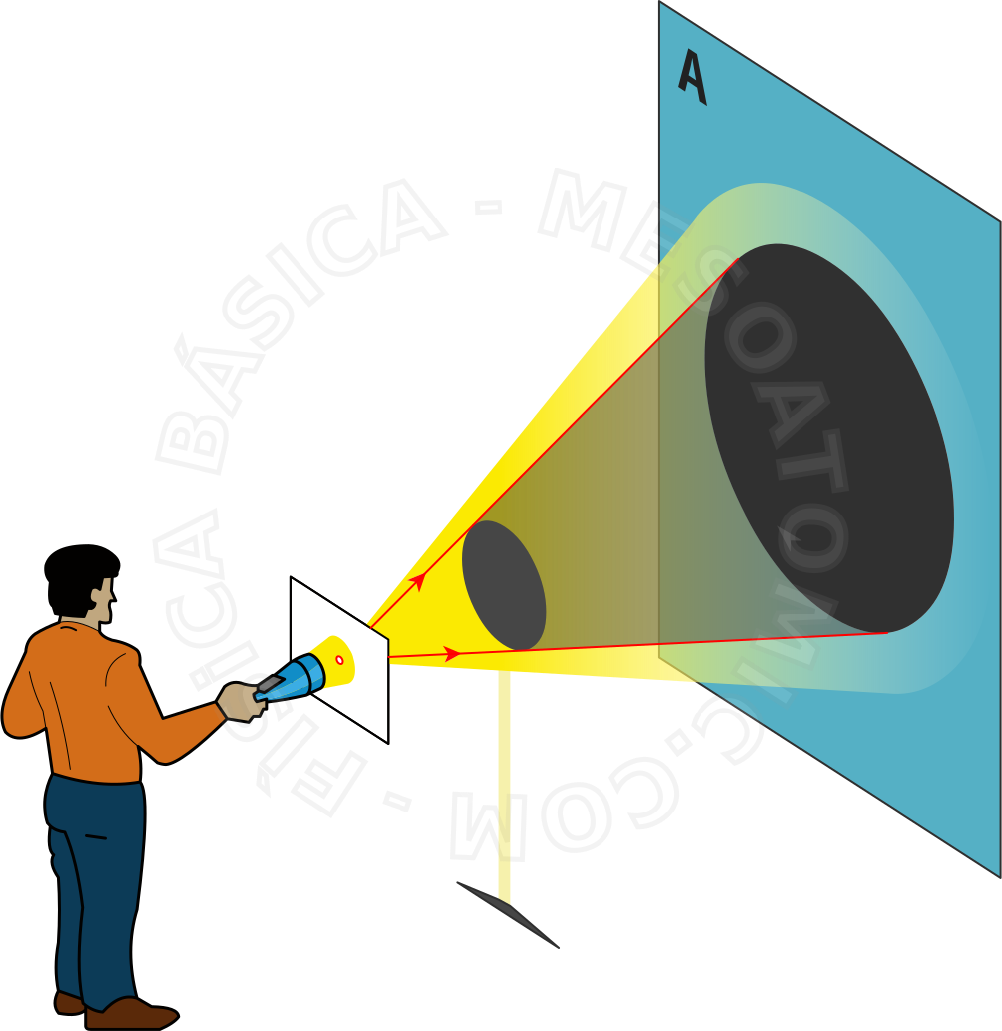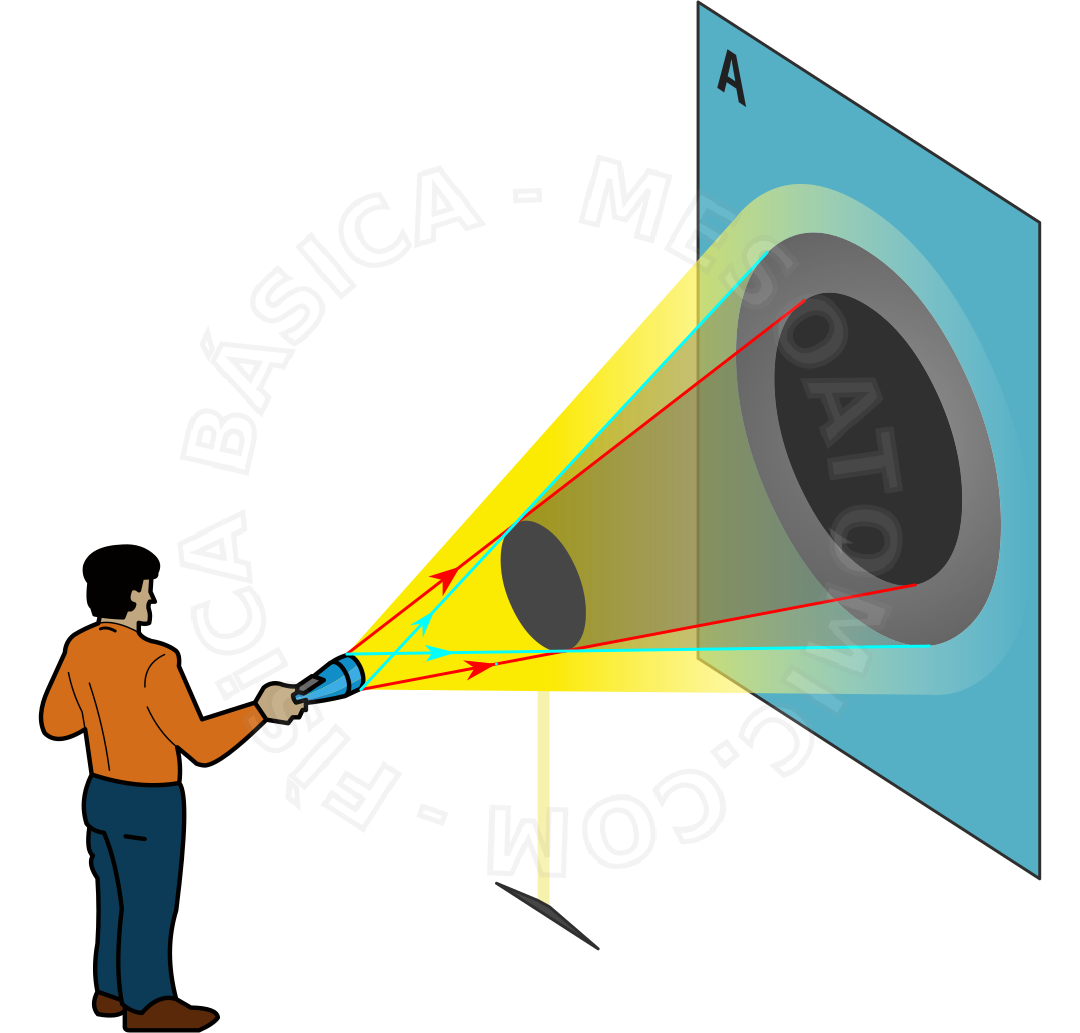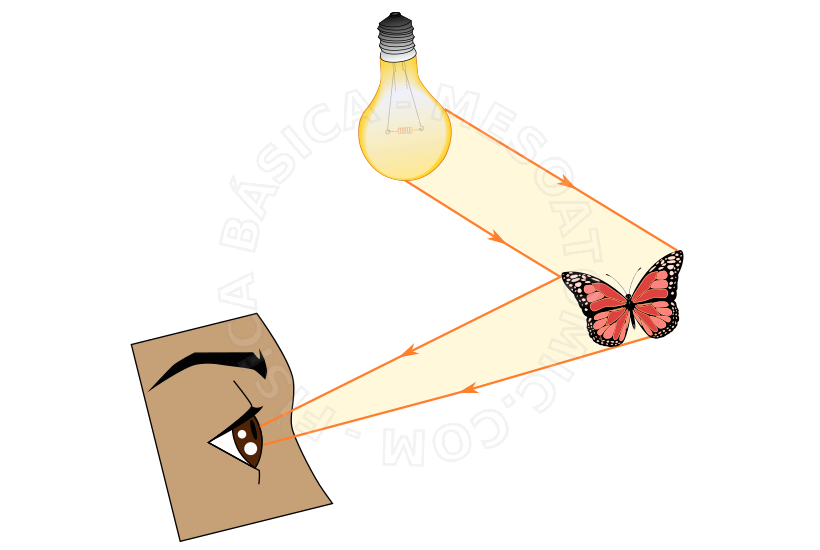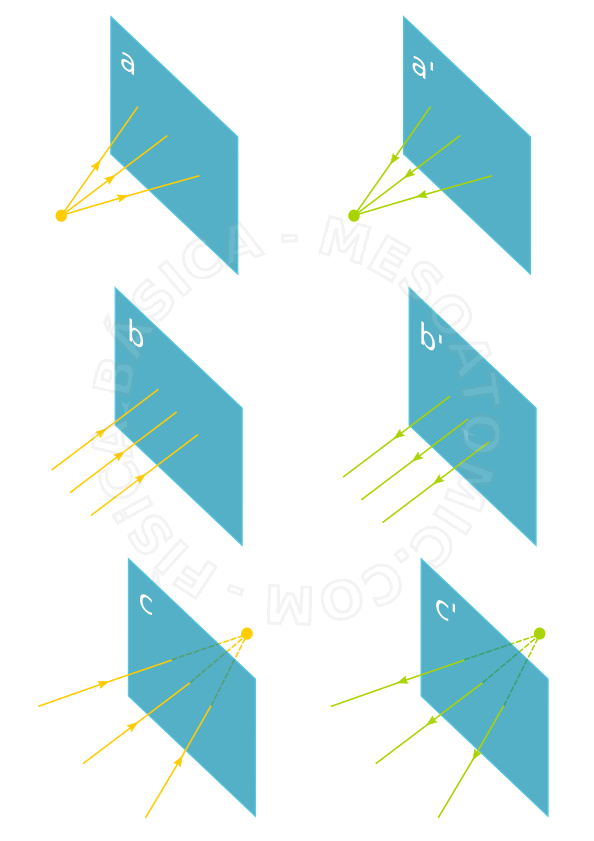- Optics
- /
- Princ. of Geometrical Optics
- /
- Principles of geometrical optics
Optics is the branch of physics that studies the phenomena associated with the propagation and interaction of light with matter. In the past, it was not known what light is made of. Would it be a set of particle or a wave? We now know that light is an electromagnetic wave, but sometimes, this wave behaves like particles!
Principles of Geometrical Optics
Geometrical optics is the study of the light propagation in transparent media, and is based on the fact that light can be represented as a combination of independent beams.
Important definitions:
- Beams of Light
- They are lines along which the energy of the electromagnetic waves propagates. They also indicate the direction of propagation.
- Point Source
- It is a light source where its dimensions are negligible compared to the distances between it and the objects of interest.

Consider a screen, a punctual light source, and an opaque disc between the light and the screen. A lighted region and the projected shadow of the disc will be projected on the screen. - Extensive Source
- It is one that we cannot ignore its size relative to other objects in the system of interest.

Consider a screen, a light source, and an opaque disc between the light and the screen. A lighted region and the projected shadow of the disc will not be only projected on the screen but also a penumbra. - Shadow
- It is the region of a body that does not receive light when this is interposed between a puntual light source and a screen. The dark region that forms on the screen is called projected shadow.
- Penumbra
- When an object is interposed between one extensive light source and some screen, there is a lighter shadow region before the very dark shadow. In this case, the shadow projected on the screen will also have a lighter shadow region called projected penumbra.
- Monochromatic Light (Single)
- It is light of a single color, or an electromagnetic wave of a single frequency.
- Polychromatic Light (Composite)
- It is the light that results from the different color lights overlay, i.e., a sum of electromagnetic waves with different frequencies.
- Light Filters
- They are materials that absorb all colors, except one. They have the color they do not absorb.
Material medium
- Transparent
- It allows the passage of visible light, letting us see clearly objects behind them.
- Translucent
- It allows the passage of visible light, but do not allow us to see clearly objects behind them.
- Opaque
- It does not allow the passage of visible light through them.
- Homogeneous
- They are those that have the same properties in all the volume.
- Isotropic
- They are those in which the properties are the same in all directions.
Point Objects and Point Images
We are able to see objects when the ambient light is reflected on them and the reflected light reaches our eyes, forming the object images. For this reason, we cannot see in the dark.

- Object Point
- It is the vertex of the light brush incident on the optical system. The real object point is the vertex of the divergent brush of light. The virtual point is the vertex of the converging light beams.
- Point Image
- We define image point as the vertex of the emerging light brush of the optical system.

